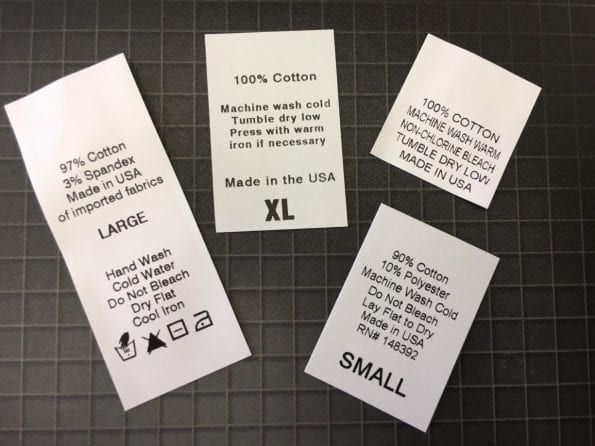I happen to be someone who has severe peanut allergy; over the past few years I have had a few accidents after eating things that said “may contain traces of peanuts” the label. I get hives all over my body and feel super itchy and uncomfortable for a couple of hours. It is horrifying to know that something so small and so casually mentioned can have such adverse affects.
What if I tell you that it is the same for the ingredients in our clothing? We might not have an allergic reaction to eating polyester, cotton or other fabrics but the garment industry has a huge impact on both the environment and the quality of the clothes. Shouldn’t we be aware about clothing labels the same way we know about food labels?
Nowadays the fashion world is all about fast fashion where” Buy one, get one free” has become a norm. The labels only contain the ‘price’ and made in ‘details. For most of us this is where this all ends because two shirts for the price of one is a good deal, but it’s time we start knowing how these “good” deals are actually not so good and why we should start reading labels differently.
Finding about the fabric can tell you a lot about the ethics of the brand you bought from, where it is made, is it natural or synthetic? With sustainable fashion on the rise we see brands making a switch from polyester or cotton to organic cotton, bamboo, silk, wool or recycled polyester fibers.
Things to consider when we buy clothes
- Steer away from polyester and choose natural fabrics such as cotton, silk, linen or wool. These fabrics are biodegradable and can we given back to the nature once we have consumed the garment completely.
- Look out for certifications, they can tell if the material is organic or not.
- Is the garment made out of 100% material or a blend of fibers? Blends compromise the recyclability of the product.
- Use the “made in” information to know about the company’s policies and to know how they treat their employees.
If you are unsure about a brands label and the transparency it’s time to ask questions and demand answers. Reading a care label can make you spend a few extra seconds but will save you a lot of time and effort if you know that the clothes you made are good for you, the environment and the people involved in manufacturing. Cherish your clothes and save the earth at the same time.



